Maryland Housing Secretary Day estimates 96,000-unit housing shortage. Bills aim to help.
About a quarter of the bills that Maryland Gov. Wes Moore plans to introduce next year relate to one topic: housing.
The first-term Democratic executive’s emphasis on “making housing more affordable,” as he said this month when previewing his legislative initiatives, mirrors one of the top listed priorities of the Maryland Association of Counties in the year ahead.
With the association aiming to “advance comprehensive housing solutions,” Maryland’s USA TODAY Network sat down with Somerset County Commissioner Craig Mathies Sr., a member of the association’s board of directors, during their winter conference this month in Cambridge.
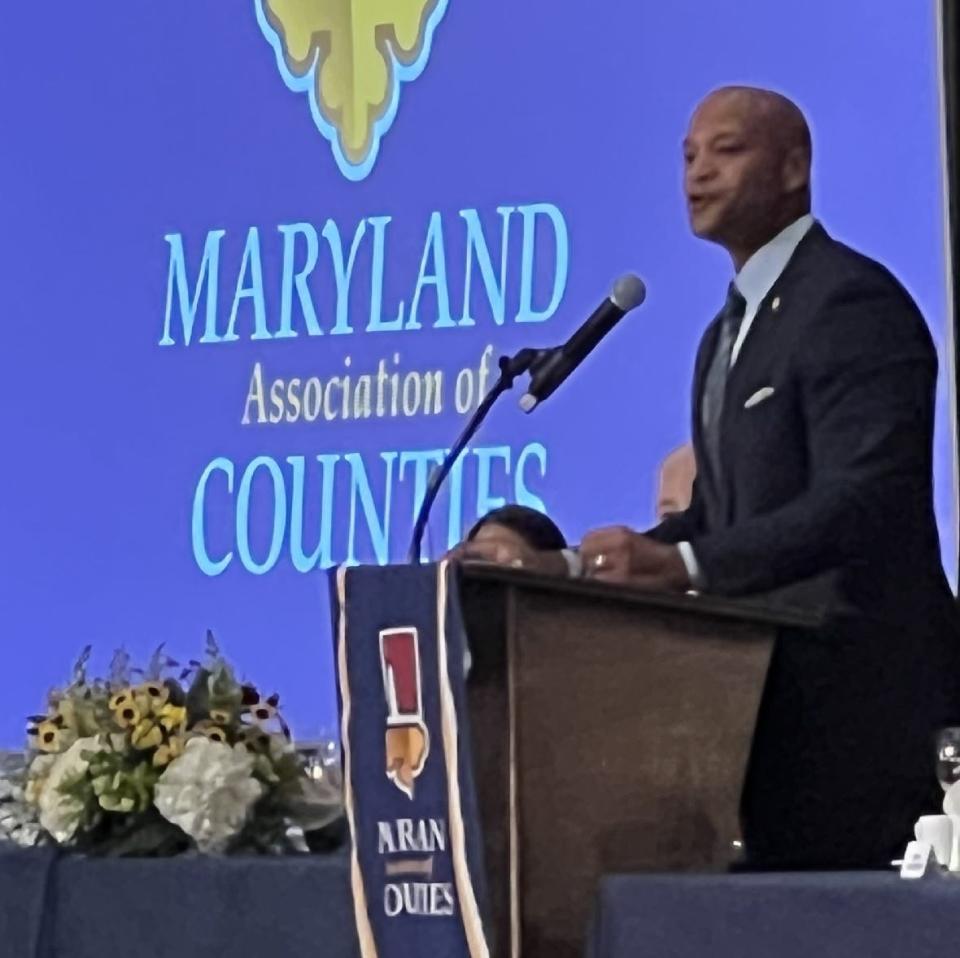
Despite the opulence of the hotel conference center where the interview occurred, the setting in the Eastern Shore city could not have been more apt. Sixty years ago, a landmark agreement between city, state, and federal officials was reached, producing housing for low-income individuals that still stands in the community today.
More: Maryland Gov. Wes Moore previews next year’s legislative session at winter conference
More: The Treaty of Cambridge: 60 years later, a legacy of hope and still a work in progress
Asked what could produce such a confluence of comity between officials today, as evictions in the state return to near pre-pandemic levels, Mathies first said: “It would have to be agreeable by all that there’s a need.” The answer that the Somerset County commissioner gave when asked if he sees a need for housing was simple: “Yes,” he said.
‘There is no doubt Maryland is in the middle of a housing crisis.'
How much need depends on whom you ask. Citing the National Low Income Housing Coalition, Dan Patrell, senior director of strategic communications for the trade association Maryland Realtors, said the housing shortage in Maryland is at nearly 150,000 units.
In February, Maryland Realtors said the shortage number is 120,000 units, and according to the organization’s president, that number was up from 82,000 the previous year.
REVIEW: There's a housing crisis in Maryland. Here's how lawmakers might fix it
REVIEW: With Salisbury's Jake Day confirmed for cabinet, what’s next for housing statewide?
Mathies described the housing landscape in Somerset County as “needy,” and on the other side of the state, Tim Fisher, CEO of Washington County Community Action Council, called the landscape in the state’s third-most western county a “crisis.”
Maryland Secretary of Housing and Community Development Jake Day, who started in his role earlier this year, also used that word to describe the situation that the state is facing during a Dec. 11 interview.
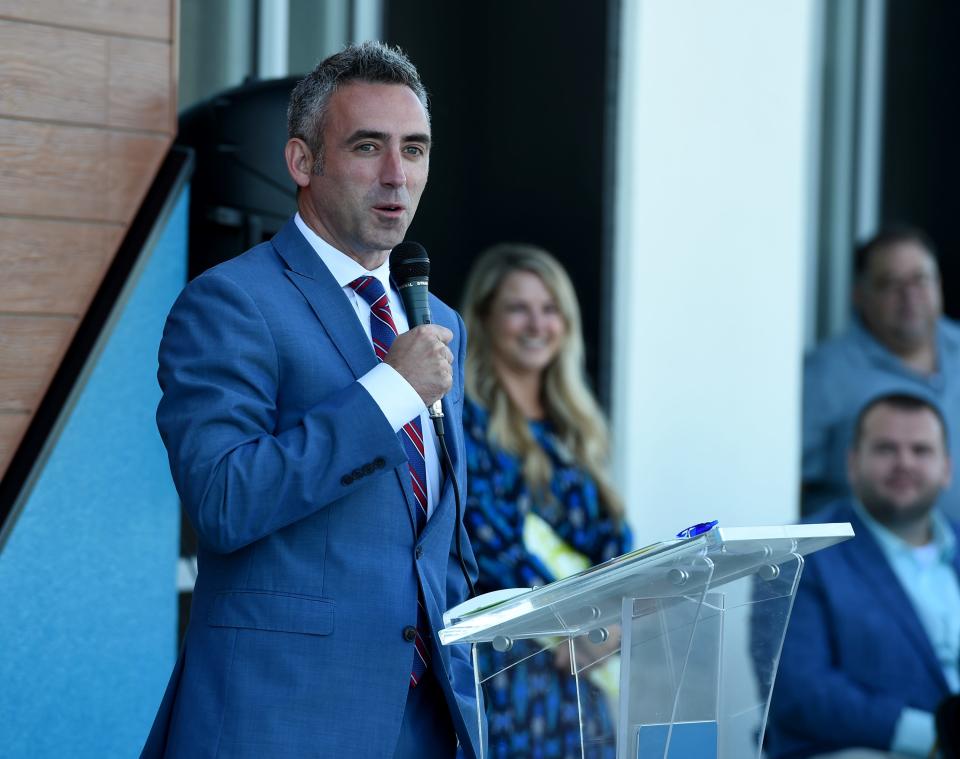
“There is no doubt Maryland is in the middle of a housing crisis,” said Day, estimating a shortage of “at least 96,000 housing units.”
Gov. Moore’s 2024 Housing Package
Prior to public pronouncements, a document from the “Office of the Governor” obtained last month from an industry professional indicated the administration’s plans to act with legislation. Multiple administration officials confirmed the document’s authenticity.
“This Housing Package is a set of necessary reforms that holistically addresses Maryland’s housing crisis,” states the seven-page document, titled “Governor Moore’s 2024 Housing Package." Three bills are outlined in the document, and a source with knowledge of the legislative package explained the bills during an interview.
“We’re not just adding supply at the top end of the market,” said the individual, “we’re building and guaranteeing affordable housing, and protecting the most vulnerable Marylanders as well.”
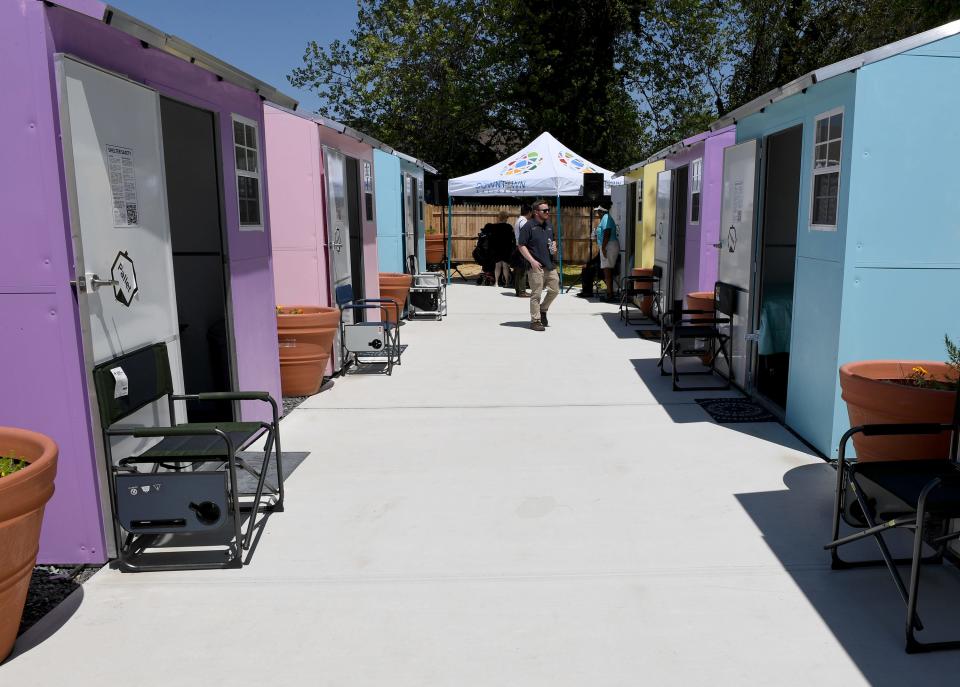
The bills included in the governor’s "housing package" are the Housing Expansion and Affordability Act of 2024, the Housing and Community Development Financing Act of 2024, and the Renters Rights and Housing Stabilization Act of 2024.
In an email Brandi de Benedictis, a spokesperson for the Maryland Department of Housing and Community Development, called the document a “draft used for discussion of the legislative package.” She said: “The proposal has not been finalized but will be announced in the coming weeks.”
The goal of the legislation, according to the individual, is to eliminate the state’s housing shortage, including by increasing the rate of production, bringing it closer in line with the state’s population growth.
“Today, we’re producing between 15,000 and 18,000 units a year, which has not kept up with the population growth in the last decade,” the individual said. “In a year’s time, I would like to see us marginally increasing that rate” of production. The individual indicated that in five years he’d like to see an increase in the rate of production between 15 and 25 percent.
Not included in the governor’s housing package is a bill, the individual said, “that the department is sponsoring, which creates a new tax credit for Permanent Supportive Housing.” That, definitionally, provides housing assistance to individuals with a disability or those experiencing chronic homelessness.
Renters Rights and Housing Stabilization Act
From where Tim Fisher sits, in his Community Action Council office, in the shadow of a being-built baseball stadium on Summit Ave. in Hagerstown, the “Renters Rights and Housing Stabilization” bill, if passed into law, may produce the most noticeable change.
These days, he estimates, on average seven to eight folks come in with eviction notices each day. At least 50% of those that come in, he says, have children. During the past few years, pandemic-era federal emergency rental assistance was disbursed from the site, helping to keep residents housed. Those funds have since run out, and evictions are back to near pre-pandemic levels.
During a recent interview, Fisher called for a bill of rights for those who rent as “an incredibly important first step,” and the governor’s proposed legislation appears to be answering that call.
More: Evictions, rising after rent assistance ran out, back near pre-pandemic levels in Maryland
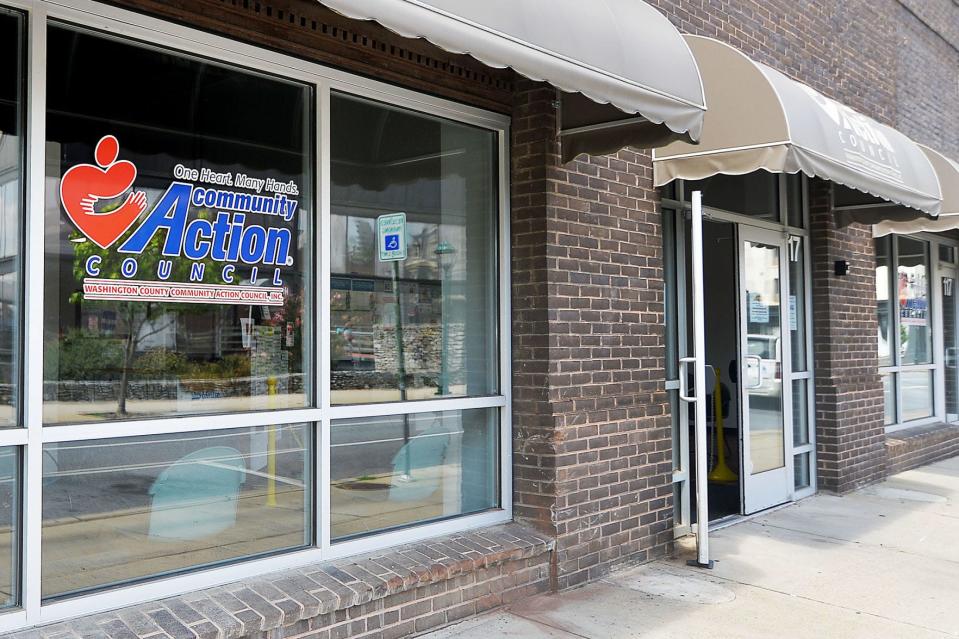
“A tenants bill of rights is going to be attached or affixed to leases signed in Maryland to ensure that everyone who rents in this state is aware of their rights,” the individual said. The legislation also plans to reduce the allowable security deposit from two months to one month’s rent, reducing upfront costs for renters.
The bill bars evictions during dangerous conditions like “winter storms, hurricanes, (and) heat emergencies,” the individual said. And the legislation also requires expanded data reporting on evictions.
Overseeing these developments and the dissemination of information, under the proposal, would be a new division within the department, the Office of Tenants Rights, that will be the state of Maryland’s organization responsible with providing renters information.
The bill also proposes increasing eviction filing fees from $15 to $100, bringing the cost from among the lowest in the country to closer to the national median charge, while also preventing landlords from passing that expense on to tenants.
The proposal indicates that half of the estimated $25 million in additional revenue would go to legal counsel for those facing evictions (which was mandated by state law two years ago) while the other half would go to the state’s housing voucher program with a prioritization of families with children under 5 and pregnant women. The individual said that new prioritization is an action “to help achieve the governor’s goal of reducing child poverty.”
Housing Expansion and Affordability Act
The housing secretary in his first year on the job is not new to housing issues in Maryland. The former mayor of Salisbury still has statistics from the city he led, which earlier this year had the highest rate of renters in the state, on the tip of his tongue.
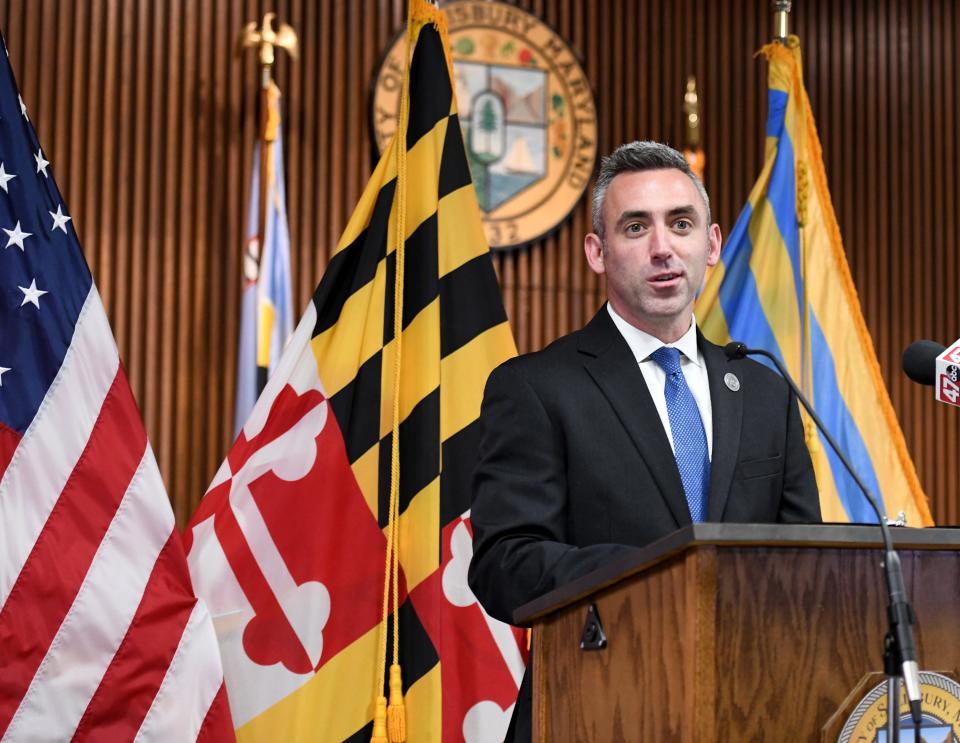
Median rents rose, he said, “in the Salisbury metro area, for example, between 2019 and 2022 by 16%.” Day said nearly half of households in his hometown are paying more than 30% of their income on rent, and statewide, the percentage of renters paying that much is more than 50%. A new bill, the Housing Expansion and Affordability Act of 2024, seeks to readjust that market.
“The only way that people get to build more, that people get a density bonus in the right area, is if they are integrating guaranteed protected affordable housing,” the individual said. One requirement, he indicated, to qualify for a bonus included 25% of all units being affordable within one mile of an existing (or planned) transit stop in Maryland.
More: Wicomico County home prices fell 1.3% in November, with houses listed at a median of $286,225
Others included at least 50% of units being affordable on state-owned and formerly state-owned properties as well as those sites owned by 501(c)(3) non-profit organizations.
“This is legislation that will maximize the value of the state’s investment in affordable housing by establishing density bonuses for qualified projects,” he said, “streamlining some regulatory processes at the local and state level.”
Asked about the balance between public input and expeditious building, the individual said boards and bodies that hear issues about development often “punt,” delaying the process of construction.
He said the legislation “will tighten up that effort,” and that it “ensures public transparency.”
“Every single body that today gets a bite at the apple will get a bite at the apple tomorrow,” said the individual, speaking in advance of the legislation’s introduction, “but it will be a bite at the apple.”
The legislation also adjusts permitting regulations for manufactured homes. The secretary cited a recent tour he completed in Baltimore County’s Dundalk where $80,000 was saved on a home by using that process. The legislation also stipulates that adequate public facility ordinances cannot be used to “unreasonably restrict” affordable housing.
‘Do what is necessary to make sure that we follow through.'
In Somerset County, which is, according to one metric, the state’s poorest jurisdiction, a group is working to elevate homes for low-income residents in Crisfield to protect them from water from the Chesapeake Bay’s Tangier Sound.
Mathies, referencing the flooding, said it is “going to take state and federal government persistence in order to do the type of projects that are really needed.”
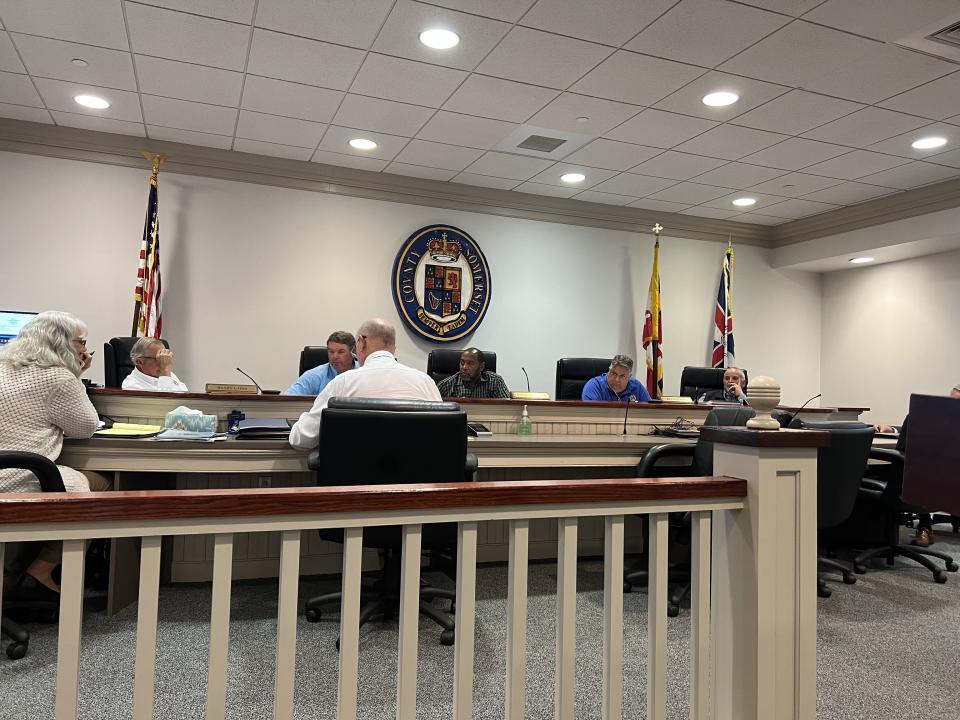
Another Moore administration bill, the Housing and Community Development Financing Act, aims to pull in federal assistance through tax credits.
That bill also, according to the preview, attempts to allow the state’s financing of debt payments and credit enhancement for local government and community development entities.
“The community development administration (part of the department) would be able to issue debt, which means we’d be able to scale up our ability to address vacancies in a huge way,” the individual said. The mayor of Baltimore recently requested $900 million in state funding over 15 years to address that city’s over 13,000 vacant properties, the vast majority of which are privately owned, including by those that reside outside of the city.
As for the federal assistance, under the legislation, that would come through the creation of the Maryland Community Investment Corporation, which as a “Community Development Entity” designated by the United States Treasury could receive the New Market Tax Credit.
California, which has had its own housing woes, has raked in over $300 million from the tax credit through its state Community Development Entity over the past 23 years. But the tax credit is not “typically used for affordable housing projects,” said that state entity’s managing director. Projects in the Golden State the past several years have ranged from medical facilities in Redding to shopping centers in Watts, and one $8.5 million project to address homelessness in Chico.
Decades ago on Maryland’s Eastern Shore, it was the intervention by the United States Department of Justice coupled with the Federal Housing Administration, which helped bring improved housing to Cambridge residents, some of whom never before had indoor plumbing or steady electricity.
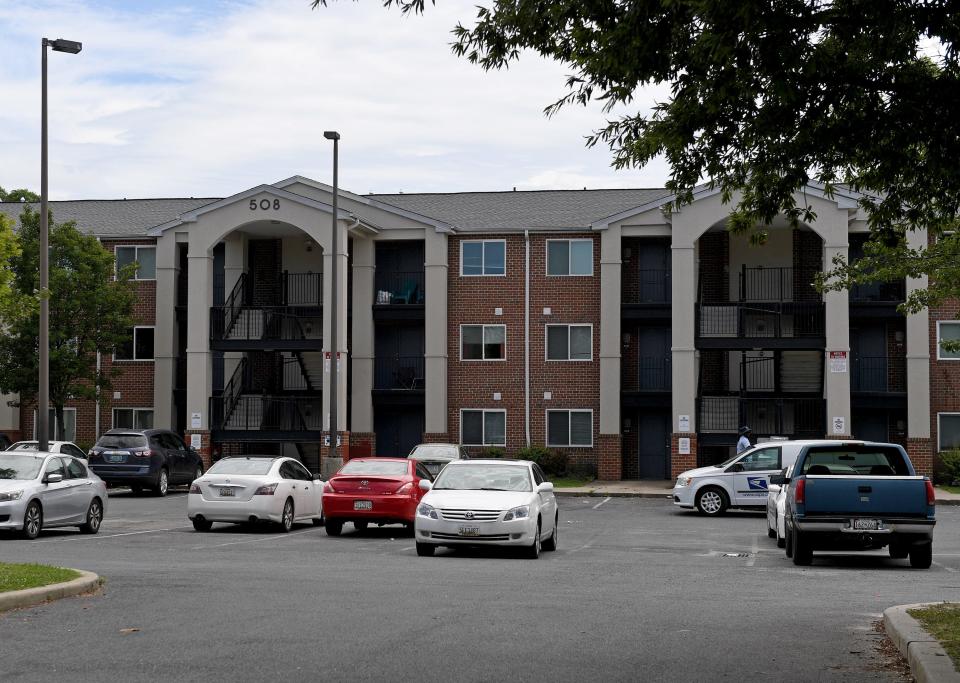
That switch was brought about by those individuals, including children, demanding something better. That type of dynamic, said Mathies, a pastor in the community, is necessary today.
“It’s going to take a real effort from persons like (Crisfield) Mayor (Darlene) Taylor and community leaders to petition our representatives in the state and federal (legislatures) to try to get them to understand how great of a need that it is,” he said.
More: ‘To help people rise’: Mayor of Crisfield has slate full of projects for waterfront city
In an eloquent four step outline of what he said needs to happen for additional housing to be constructed, Mathies concluded with the role not of the federal government, or of the state, or even of the county or city, but of the individual citizen.
“Do what is necessary,” he said, “to make sure that we follow through.”
Dwight A. Weingarten is an investigative reporter, covering the Maryland State House and state issues. He can be reached at dweingarten@gannett.com or on Twitter at @DwightWeingart2.
This article originally appeared on Salisbury Daily Times: Administration’s bills aims to address ‘Maryland’s housing crisis’

